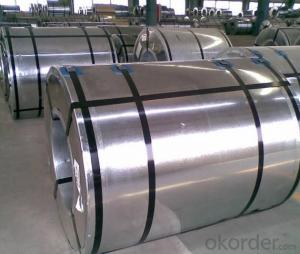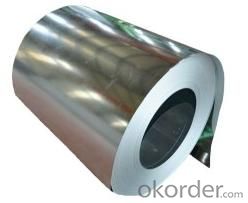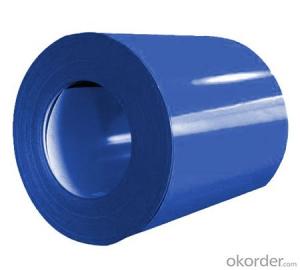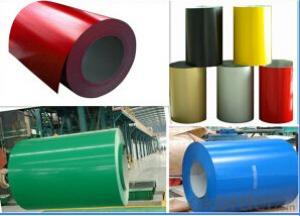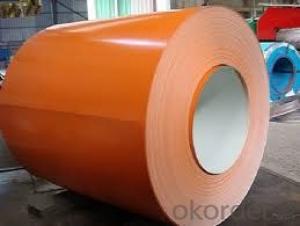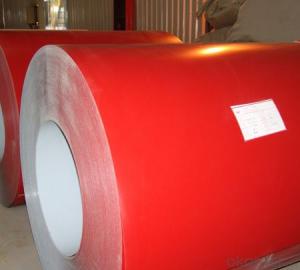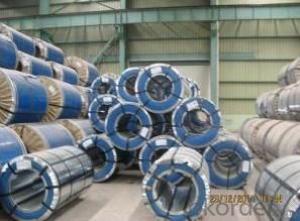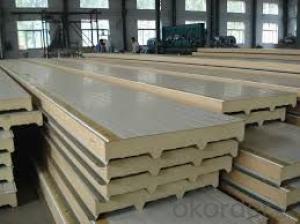Galvanized Steel Coil (DC51D+Z, DC51D+ZF (St01Z, St02Z, St03Z)) Type: Punching Steel
- Loading Port:
- Tianjin
- Payment Terms:
- TT OR LC
- Min Order Qty:
- 25 m.t.
- Supply Capability:
- 10000 m.t./month
OKorder Service Pledge
OKorder Financial Service
You Might Also Like
Basic Info.
Model NO.:DC51D+Z, DC51D+ZF (St01Z, St02Z, St03Z)
Surface Treatment:Galvanized
Technique:Cold Rolled
Standard:ASTM,JIS,GB,AISI,DIN,Bs and Others
Steel Grade:DC51d+Z,DC51d+Zf (St01z,St02z,St03z)
Export Markets:Global
Additional Info.
Trademark:AIYIA GROUP
Packing:Seaworthy Package
Standard:PRIME QUALITY
Origin:Made in China
HS Code:72103000
Production Capacity:5000tons Per Month
Product Description
Brief Introduction:
Commodity name : Prepainted Dipped Galvanized Steel Coil
Standard we can provide: AISI ASTM BS DIN GB JIS
Grade : DC51D+Z,DC51D+ZF,St01Z,St02Z,St03Z
Zinc Coating:40g-275g/m2
Color: By RAL NO.
Size we can provide:
Size Range: CRC substrate Thickness: 0.3-3.0mm
CRC substrate Width: 800-1830mm
HRC substrate Thickness:1.8-5.0mm
HRC substrate Width:900-1500mm
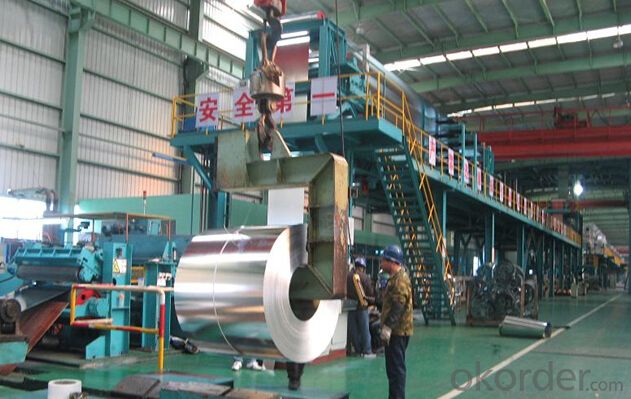
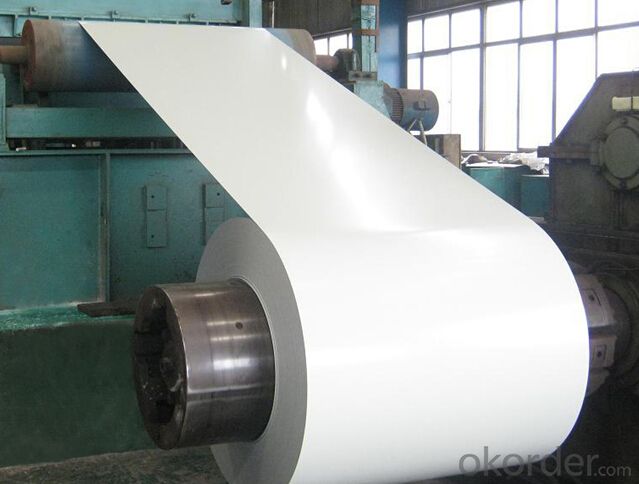
FAQ
1.What's your MOQ?
25MT, it is for one container.
2.Do you have QC teams?
Yeah, sure, our QC team is very important, they will keep the quality control for our products.
3. What's your normal delivery time?
Our delivery time about 10-20days for standard sizes, if you have other requirements like hardness and width ,it is about 20-40days. But don't worry ,we also try our best for the delivery time ,because time longer and our cost is higher.
4.Are the products tested before shipping?
Yes, all of our PPGI and GI was qualified before shipping. We test every batch every day.
- Q: How are steel coils used in the production of steel fasteners?
- Steel coils are used in the production of steel fasteners by being processed into flat strips or wires, which are then cut, shaped, and threaded to create various types of fasteners such as screws, bolts, and nuts. The coils provide a continuous supply of steel material that is easily manipulable and can be efficiently transformed into the desired shape and size for fastener production.
- Q: so what is stronger tempered steel Blade or carbon steel Blade? a Machete made of those i said above what will last longer,what can cut better,which will will shatter first.
- 1. all steel blades are tempered, whether they are high carbon blades or low carbon blades. 2. It depends on what kind of steel they are made from. So im going to answer this question, using the following qualifications. 440A stainless steel 440C stainless steel - high carbon. The higher the carbon level, the more brittle a blade becomes. But the higher the carbon level, will increase a steel’s wear resistance , meaning it will have a better edge retention 2. They both will work well. Pros's / Con's The 440C blades will need less sharpening, but are harder to sharpen The 4401 blades will need to be sharpened more, but are far easier to resharpen. So it basically comes down to where you will be using them and how you will be using them. If your gonna be out in the middle of the jungle and stopping for the night, then the high carbon blade would probably be better, you use it all day, resharpen it at night. If your gonna be cutting brush, tobbaco, etc on your land, then the 440A would be better, because you can take a couple of min's to resharpen it often
- Q: looking for a good pocket knife. i keep going through these 440 steel pocket knives with every day work usage. this will be my 4th. even when i use a whetstone they stay sharp for a short period of time but the edge does not last, 440 is too soft! what is a good steel to look for in a pocket knife? also what are some good brands. ive been using gerber and buck sofar. if you could recommend me a few mid/small sized knives i would greatly appreciate it!
- Best Steel For Pocket Knife
- Q: What is current price of steel in US market?
- here okorder /
- Q: How are steel coils shipped internationally?
- To ensure the safe and efficient transportation of steel coils internationally, various methods are utilized. The most commonly employed technique involves container shipping, where steel coils are placed in standard shipping containers. These containers are specifically designed to handle heavy and bulky cargo like steel coils. To load the steel coils into the containers, they are typically stacked horizontally and secured with steel strapping or metal bands to prevent any movement during transit. This ensures stability and minimizes the risk of damage. Additionally, wooden or metal dunnage may be used to separate and secure the coils, further preventing any shifting. Once loaded, the containers are sealed and transported to the port using trucks or trains. At the port, the containers are loaded onto cargo ships utilizing crane or specialized equipment, such as roll-on/roll-off (RO-RO) vessels or semi-submersible ships. These ships provide a protected environment for the steel coils during the journey, shielding them from adverse weather conditions and potential damage. Throughout the voyage, the steel coils are subjected to various safety measures to prevent corrosion and maintain their integrity. These measures include the application of protective coatings, such as oil or special paints, as well as the use of desiccants or humidity control systems inside the containers to regulate moisture levels and minimize the risk of rusting. Upon arrival at the destination port, the containers are unloaded from the ship and transferred to trucks or trains for further transportation to their final destination. At this stage, the steel coils may undergo customs clearance and inspection procedures before being delivered to the intended recipients. In conclusion, the international shipping of steel coils requires careful planning, secure packaging, and the utilization of specialized containers and equipment to ensure their safe and successful transport.
- Q: How do steel coil manufacturers handle customer complaints?
- Steel coil manufacturers handle customer complaints by first listening to the customer's concerns and understanding the nature of the complaint. They then investigate the issue thoroughly, often by inspecting the product or reviewing production records. Once the cause of the complaint is determined, they take appropriate actions such as offering replacements, refunds, or repairs. They prioritize open communication with the customer, ensuring that their concerns are addressed promptly and professionally. Additionally, manufacturers may use customer feedback to improve their processes and prevent similar issues in the future.
- Q: Can steel coils be cut?
- Yes, steel coils can be cut.
- Q: How are steel coils used in the production of electrical switches?
- Steel coils are used in the production of electrical switches as the core component of electromagnetic relays. When an electric current passes through the coil, it generates a magnetic field which attracts or repels a metal armature, thus opening or closing the electrical circuit. This mechanism allows electrical switches to control the flow of electricity in various applications.
- Q: I need to know a name of any site which provides information on Steel structures??
- steel structure- TC bolt to connect,SG shear wrench
- Q: I'm putting a bathroom in my basement. I'm an Ironworker btw. I wanted to go with steel studs due to the fact that they are light, and I won't have a big mess. I live in the Chicago area and they should be easy to find. Here is my question. Are they not being used anymore? I ordered 100 studs from Lowe's but they didn't have track. The delivery guy was a retired Carpenter and he told me that I got all the studs they had, they no longer stock steel studs, and they don't have track. Am I missing something? Menards didn't have track either.
- Steel studs are mainly for commercial applications on non bearing walls. 100 studs, must be one big assed bathroom. Do yourself a favor and install a pressure treated bottom plate, even if you use steel studs.
Send your message to us
Galvanized Steel Coil (DC51D+Z, DC51D+ZF (St01Z, St02Z, St03Z)) Type: Punching Steel
- Loading Port:
- Tianjin
- Payment Terms:
- TT OR LC
- Min Order Qty:
- 25 m.t.
- Supply Capability:
- 10000 m.t./month
OKorder Service Pledge
OKorder Financial Service
Similar products
Hot products
Hot Searches
Related keywords
